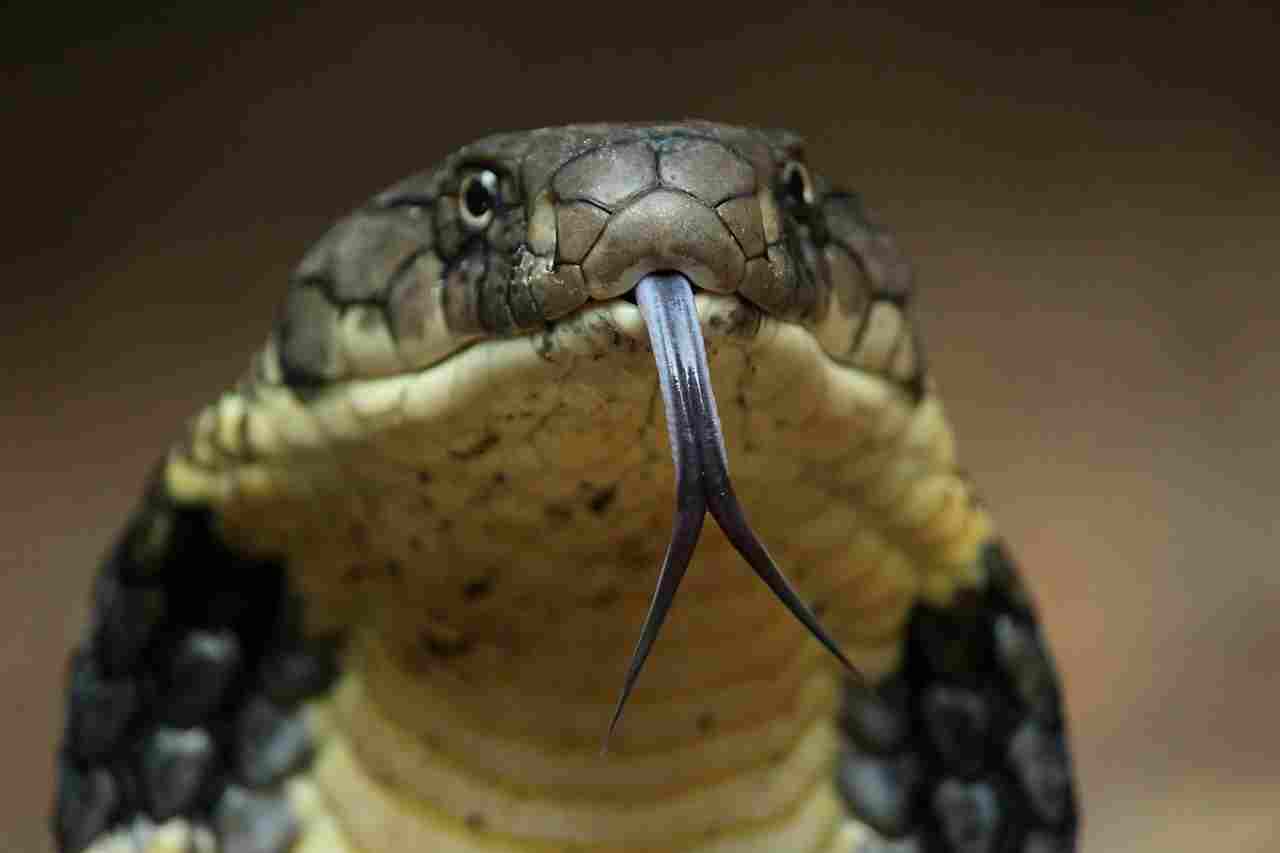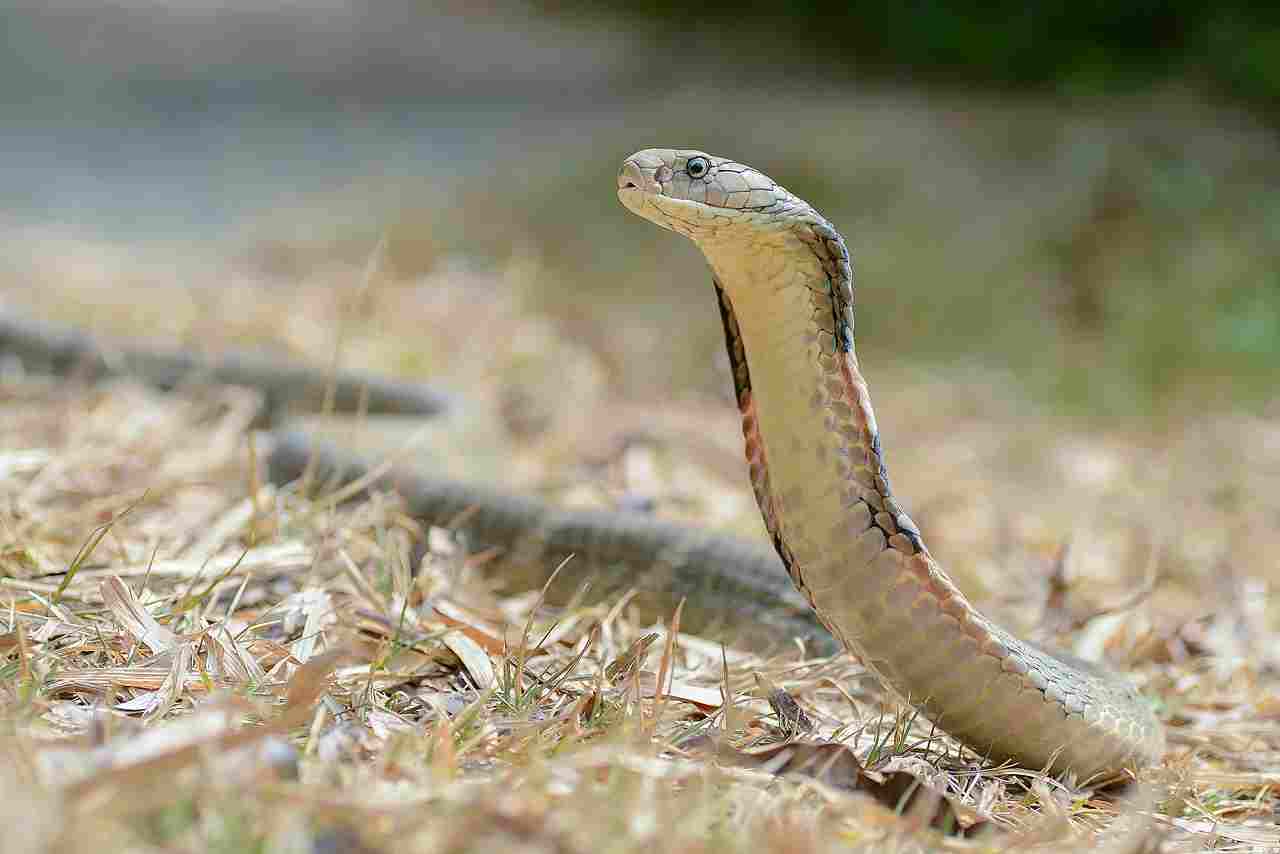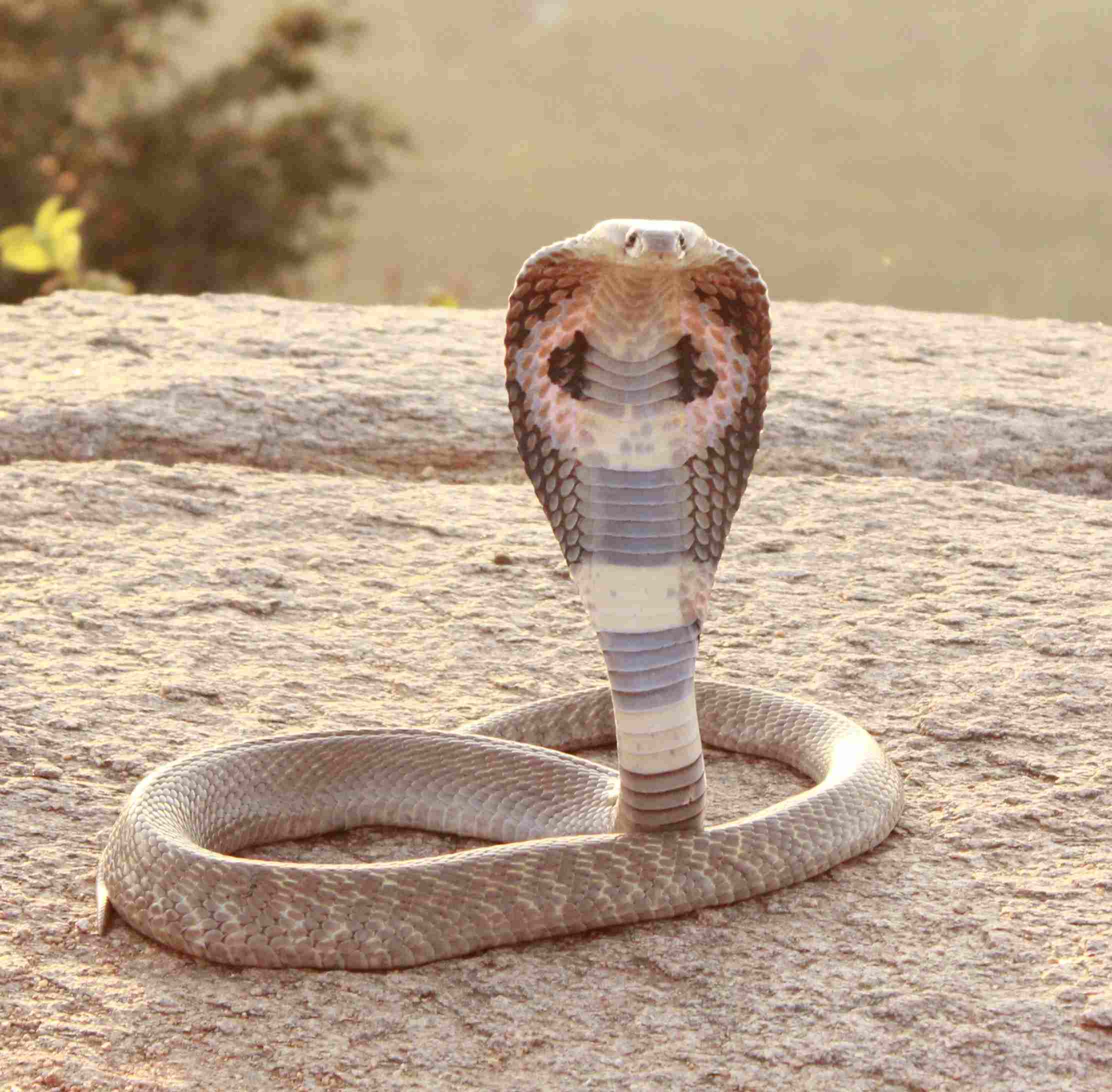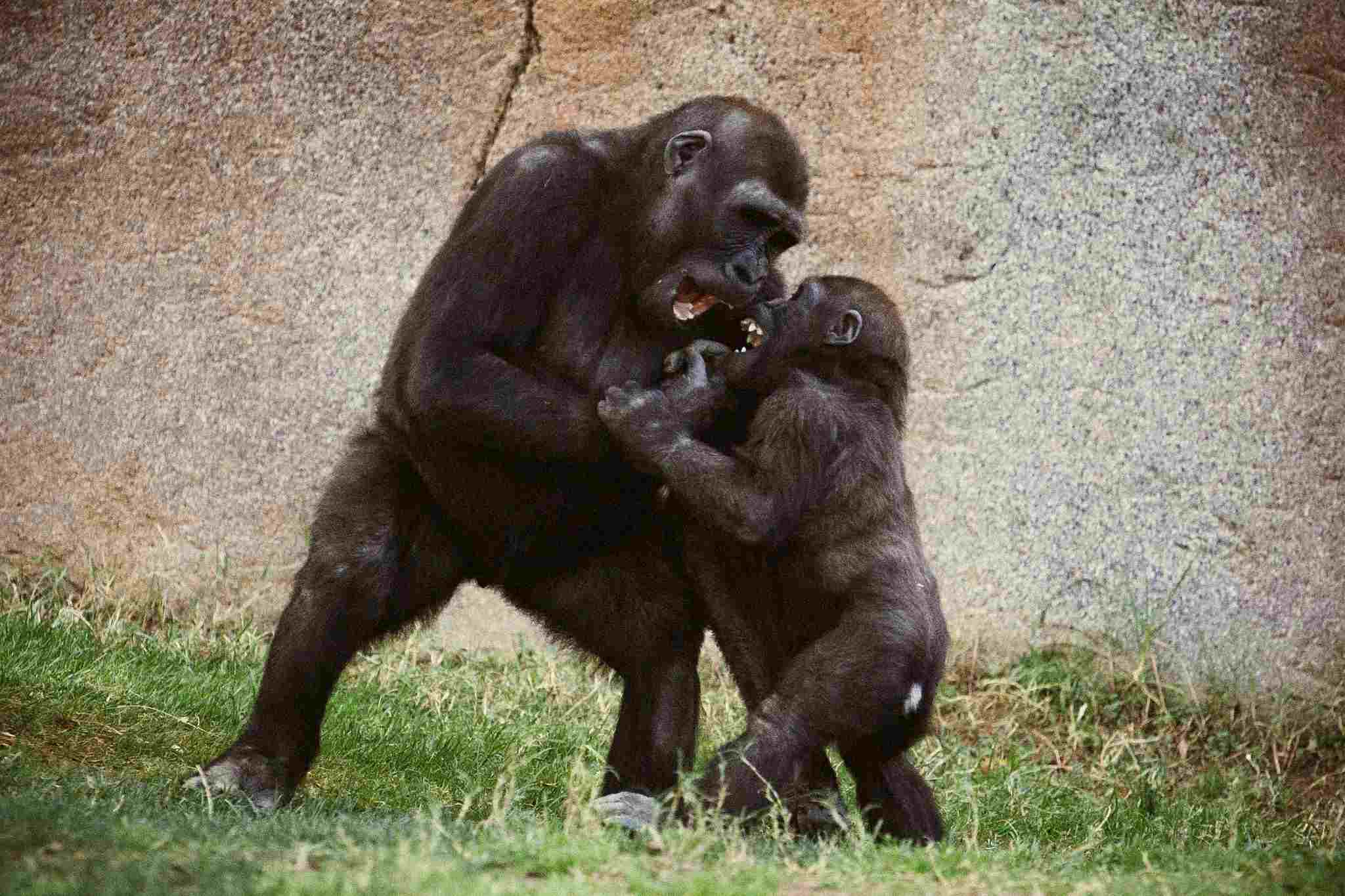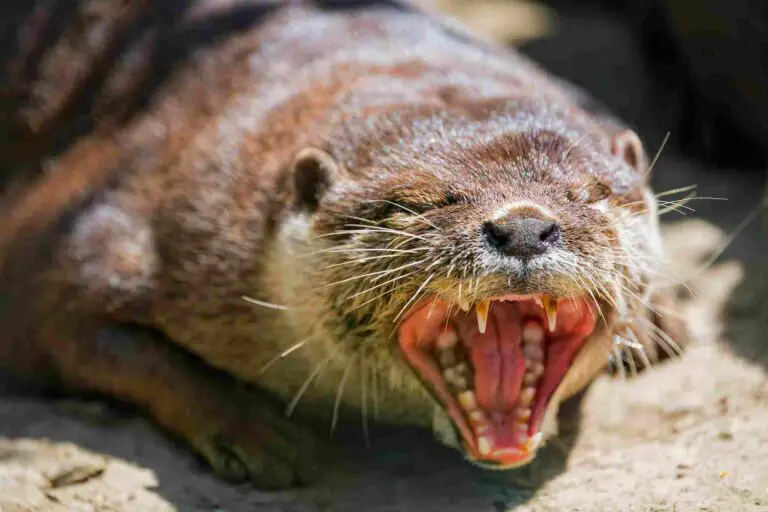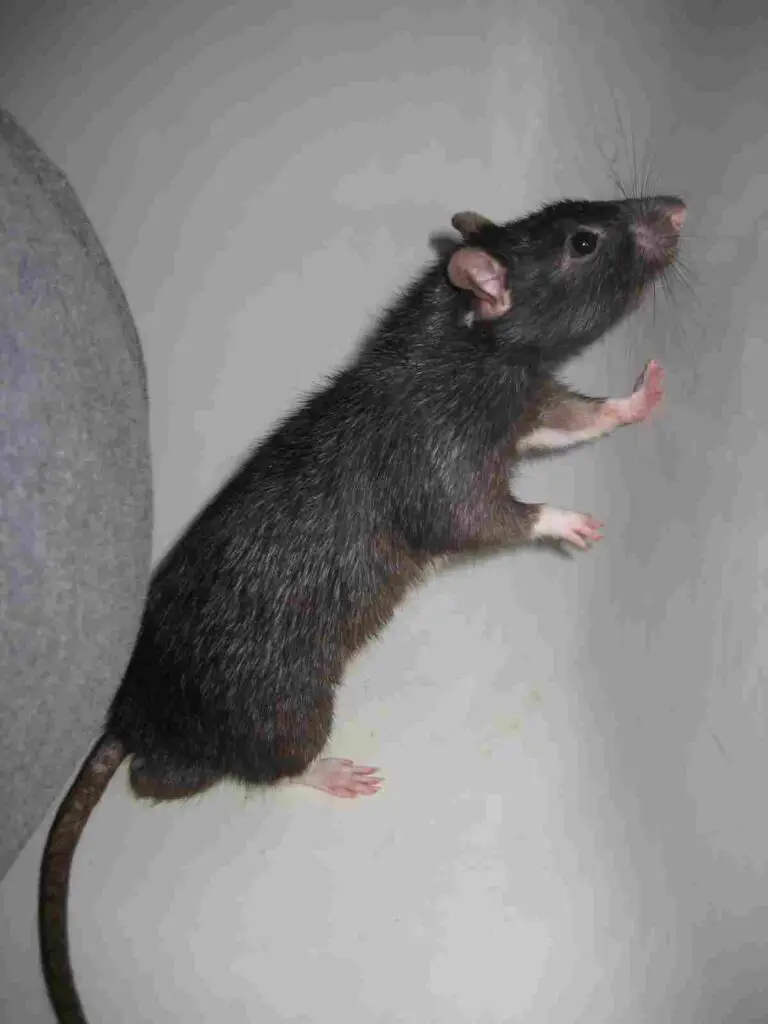23+ Dangerous Animals In Vietnam And Their Characteristics
Examples of dangerous animals in Vietnam include the saltwater crocodile, known for its large size and powerful jaws; the king cobra, the longest venomous snake with a potentially deadly bite; and the Malayan pit viper, which can cause severe tissue damage with its hemotoxic venom. Other dangerous animals include the Indochinese tiger, a large predator that can attack if threatened, and the Asian elephant, which can become aggressive, especially during musth or when protecting its young. The red-crested fireback, although a bird, can also be dangerous with its sharp beak and claws, while the yellow sac spider can cause painful bites with its venom. Overall, caution and respect for these creatures’ habitats are key to avoiding dangerous encounters in Vietnam’s diverse ecosystems.
1. Saltwater Crocodile
The saltwater crocodile (Crocodylus porosus) is the largest and most dangerous of all crocodile species, and it can be found in Vietnam’s coastal regions and river deltas. These formidable reptiles can grow up to 23 feet in length and weigh over a ton, with a fearsome bite force and aggressive territorial behavior. They are known to prey on a variety of animals, including fish, birds, mammals, and even other crocodiles. Human encounters with saltwater crocodiles can be fatal, as they are known for their stealth and sudden attacks, making them one of the most feared predators in the region. It is advisable to exercise extreme caution when in crocodile habitats and to respect local safety guidelines to avoid any dangerous encounters.
2. King Cobra
The king cobra (Ophiophagus hannah) is the world’s longest venomous snake, reaching lengths of up to 18 feet. Found in Vietnam’s forests and jungles, it is known for its distinctive hood and potent venom, which can cause respiratory failure and death if not treated quickly. The king cobra is a solitary creature, often seen near bodies of water or in dense vegetation. Despite its fearsome reputation, it generally avoids humans, but it will aggressively defend its territory or nest if threatened. Prompt medical attention is crucial in the event of a king cobra bite.
3. Malayan Pit Viper
The Malayan pit viper (Calloselasma rhodostoma) is a venomous snake found in Vietnam’s forests and rural areas. It is known for its triangular head and reddish-brown coloration, which helps it blend into its surroundings. This snake’s venom contains hemotoxins that can cause severe tissue damage, bleeding, and even death. The Malayan pit viper is often found on the ground, where it hunts small mammals and birds. It’s a nocturnal predator, which makes it particularly dangerous for those who venture into its habitat at night. Immediate medical attention is necessary for a bite from this snake.
4. Many-Banded Krait
The many-banded krait (Bungarus multicinctus), also known as the Chinese krait, is a highly venomous snake native to Vietnam and other parts of Southeast Asia. Recognizable by its distinct black-and-white bands, this nocturnal snake is often found near water sources or in rural areas. The venom of the many-banded krait is neurotoxic, leading to paralysis and respiratory failure. Despite its lethality, the krait is generally shy and will avoid confrontation with humans if possible. However, accidental encounters can occur, and a bite requires immediate medical attention due to its high mortality rate.
5. Black Cobra

The black cobra (Naja atra), also known as the Chinese cobra, is a highly venomous snake found in Vietnam. It is characterized by its dark coloration and ability to spread its hood when threatened. The venom of the black cobra contains both neurotoxins and cytotoxins, causing severe pain, tissue damage, and potentially fatal respiratory failure. While generally avoiding human interaction, this snake will strike when it feels cornered or threatened. Immediate medical treatment is essential for cobra bites, and caution is advised when venturing into areas where this snake may be present.
6. Indochinese Tiger
The Indochinese tiger (Panthera tigris corbetti) is a majestic yet formidable predator found in Vietnam’s dense forests and mountains. It is smaller than its Bengal and Siberian cousins but still capable of overpowering large prey. With its striking orange coat and black stripes, the Indochinese tiger is a stealthy hunter, often stalking its prey before launching a surprise attack. Although these tigers generally avoid humans, habitat loss and human encroachment have led to increased encounters, sometimes resulting in attacks. Conservation efforts are crucial to protect this critically endangered species and reduce conflicts with local communities.
7. Asian Elephant
The Asian elephant (Elephas maximus) is a large and powerful mammal found in Vietnam’s forests and grasslands. Although known for its intelligence and gentle nature, the Asian elephant can become extremely dangerous when threatened or provoked. Male elephants, especially during musth, and females with calves, can be aggressive and unpredictable. With their massive size and strength, they can cause significant damage and pose a serious risk to humans who encroach on their territory. Conservation efforts are essential to maintain a safe distance between elephants and human settlements to minimize conflicts.
8. Asian Black Bear
The Asian black bear (Ursus thibetanus), also known as the moon bear, is a formidable omnivore found in Vietnam’s mountainous regions. Distinguished by its black fur and crescent-shaped white patch on its chest, this bear is generally shy and avoids humans. However, it can become aggressive if it feels threatened or is protecting its cubs. Asian black bears have powerful limbs and sharp claws, which they use for climbing and foraging. Due to habitat loss and illegal wildlife trade, encounters with humans have become more frequent, leading to potential danger. Conservation efforts are critical to protect this species and reduce human-bear conflicts.
9. Sun Bear
The sun bear (Helarctos malayanus) is the smallest of all bear species, but don’t let its size fool you—it’s still a dangerous animal. Found in Vietnam’s forests, the sun bear has sharp claws and strong jaws, which it uses to forage for insects and fruit. Despite its generally shy demeanor, it can be aggressive if threatened or cornered. With its distinctive golden chest patch, the sun bear is a frequent target of poachers, leading to increased human encounters. Efforts to protect its habitat and prevent illegal wildlife trade are vital to ensure the safety of both bears and humans.
10. Clouded Leopard
The clouded leopard (Neofelis nebulosa) is a sleek and elusive predator found in Vietnam’s dense forests. Named for its cloud-like spots, this cat is an adept climber and a formidable hunter, capable of taking down prey much larger than itself. Although generally reclusive and avoiding humans, the clouded leopard can pose a danger when its habitat is encroached upon or when it feels threatened. Its stealth and agility make it a challenging animal to spot, contributing to its mystique. Conservation efforts are necessary to protect this vulnerable species and prevent human-wildlife conflicts.
11. Indochinese Leopard
The Indochinese leopard (Panthera pardus delacouri) is a powerful predator found in Vietnam’s forests and mountainous regions. This subspecies of leopard is characterized by its striking spotted coat and exceptional climbing abilities. Although it tends to avoid human contact, the Indochinese leopard can be dangerous when its territory is threatened or when it’s hunting. It preys on a variety of animals, from monkeys to deer, and is known for its stealth and speed. Habitat loss and poaching have put this leopard at risk, and conservation efforts are crucial to ensure its survival and reduce potential conflicts with humans.
12. Banded Sea Krait
The banded sea krait (Laticauda colubrina) is a highly venomous sea snake found in Vietnam’s coastal waters and coral reefs. Distinguished by its black-and-white bands, this snake is adapted to both land and sea, often coming ashore to lay eggs or rest. Although it generally avoids humans, the banded sea krait’s venom contains potent neurotoxins that can cause paralysis and respiratory failure. Encounters with this snake are relatively rare, but when they do occur, swift medical attention is essential. It plays a critical role in marine ecosystems, and efforts to protect its habitat are important for maintaining the balance of these environments.
13. Irrawaddy Dolphin
The Irrawaddy dolphin (Orcaella brevirostris) is a unique and critically endangered dolphin species found in Vietnam’s coastal and freshwater regions, including the Mekong River. Although generally not aggressive toward humans, the Irrawaddy dolphin can become dangerous if threatened or disturbed, particularly if it feels trapped or disoriented. These dolphins are known for their rounded foreheads and playful behavior, but their population has declined due to habitat degradation and human activities like fishing. Conservation efforts are crucial to protect this species and ensure that it continues to play its role in the ecosystem without posing risks to human activities.
14. Dugong
The dugong (Dugong dugon) is a large marine mammal similar to a manatee, found in Vietnam’s coastal waters. Known for its gentle demeanor, the dugong primarily feeds on seagrass. Despite its peaceful nature, the dugong can be dangerous due to its massive size and weight, which can pose risks to small boats or swimmers if they come into contact. The dugong is threatened by habitat loss, pollution, and illegal hunting, making it a vulnerable species. Conservation efforts are needed to protect its habitat and ensure that human activities do not lead to dangerous encounters or further decline in dugong populations.
15. Siamese Crocodile
The Siamese crocodile (Crocodylus siamensis) is a critically endangered crocodile species found in Vietnam’s rivers and swamps. Smaller than the saltwater crocodile, it still poses a significant danger due to its powerful jaws and aggressive nature when threatened. Siamese crocodiles have suffered from extensive habitat loss and poaching, leading to a severe decline in their population. Although generally reclusive, they can attack if provoked or when defending their territory. Conservation programs are essential to protect the remaining populations of this species and reduce human-crocodile conflicts.
16. Malayan Porcupine
The Malayan porcupine (Hystrix brachyura) is a large rodent found in Vietnam’s forests and grasslands. Known for its distinctive quills, which it uses as a defense mechanism, the Malayan porcupine can be dangerous if threatened. When agitated, it can raise its quills and charge at a perceived threat, potentially causing serious injury. Although primarily nocturnal and preferring to avoid human contact, this porcupine’s habitat overlaps with human settlements, leading to potential conflicts. Efforts to minimize these encounters and protect the porcupine’s natural habitat are crucial for the safety of both humans and these unique rodents.
17. Giant Forest Scorpion
The giant forest scorpion (Heterometrus swammerdami) is one of the largest scorpion species, found in Vietnam’s forests and jungle regions. Known for its intimidating size and large pincers, it can deliver a painful sting. Although not typically fatal, its sting can cause intense pain, swelling, and allergic reactions. The giant forest scorpion is nocturnal and tends to hide under rocks or debris, making it easy to accidentally encounter. Extreme caution is advised when exploring its habitat.
18. Red-Crested Fireback
The red-crested fireback (Lophura erythrophthalma) is a striking bird found in Vietnam’s tropical forests. While not inherently dangerous, its sharp beak and claws can cause injury if the bird feels threatened or is cornered. Male firebacks, with their vibrant red crests, are known to be more aggressive during mating season or when defending their territory. These birds play an important role in their ecosystem, and understanding their behavior helps minimize risks.
19. Giant Centipede
The giant centipede (Scolopendra subspinipes) is a venomous arthropod found in Vietnam’s tropical and subtropical regions. It can grow up to 12 inches long, and its bite can be extremely painful, causing swelling, fever, and other symptoms. While not usually deadly to humans, some people can have severe allergic reactions. The giant centipede is nocturnal and typically hides in dark, damp places. It is advisable to take precautions when in its habitat to avoid being bitten.
20. Yellow Sac Spider
The yellow sac spider (Cheiracanthium spp.) is a small but venomous spider found in Vietnam. Known for its yellowish coloration, this spider typically hides in crevices or under leaves. Its bite can cause painful symptoms, including redness, swelling, and in some cases, necrosis. Although not usually fatal, some individuals may experience severe reactions. Because it often hides indoors, care should be taken to keep living spaces clean and free from clutter where spiders might dwell.
21. Malayan Civet
The Malayan civet (Viverra tangalunga) is a nocturnal mammal found in Vietnam’s forests and rural areas. Known for its cat-like appearance and strong scent, the Malayan civet can become aggressive if it feels threatened or cornered. It is an omnivorous creature, feeding on small animals and fruits, and often roams into human settlements in search of food. Although it generally avoids confrontation, it can scratch or bite if provoked. Keeping a safe distance is advised.
22. Fishing Cat
The fishing cat (Prionailurus viverrinus) is a medium-sized wild cat found in Vietnam’s wetlands and marshy areas. As the name suggests, it is adept at catching fish and is a strong swimmer. Although it generally avoids humans, it can become aggressive if cornered or if its territory is encroached upon. The fishing cat’s sharp claws and teeth can cause significant injury, and caution is advised when exploring its habitat.
23. Oriental Pied Hornbill
The Oriental pied hornbill (Anthracoceros albirostris) is a large and striking bird found in Vietnam’s forests and coastal areas. Although not typically aggressive, its large beak and strong wings can cause injury if the bird feels threatened or disturbed. Hornbills are known for their distinctive calls and impressive aerial displays. While generally harmless, it’s important to respect their space, especially during nesting season, when they might defend their territory.
24. Red Junglefowl
The red junglefowl (Gallus gallus) is the wild ancestor of the domestic chicken, found in Vietnam’s forests and rural areas. While it is usually harmless, it can become aggressive during the breeding season or if it feels threatened. Males, known as roosters, have sharp spurs on their legs, which they use for fighting. Although not typically dangerous to humans, caution should be exercised, especially when approaching during mating season.
| Animal | Description |
| Saltwater Crocodile |
The largest and most dangerous of all crocodile species, found in Vietnam’s coastal areas.
|
| King Cobra |
The longest venomous snake with potent neurotoxic venom, found in Vietnam’s forests.
|
| Malayan Pit Viper |
A venomous snake with hemotoxic venom, common in Vietnam’s forests and rural regions.
|
| Many-Banded Krait |
A highly venomous snake with neurotoxic venom, often found near water sources.
|
| Black Cobra |
A venomous snake with a potent bite, known for its black color and spreading hood.
|
| Indochinese Tiger |
A large and powerful predator, smaller than the Bengal tiger, found in Vietnam’s forests.
|
| Asian Elephant |
A large mammal that can become aggressive if threatened or during musth.
|
| Asian Black Bear |
A shy but potentially aggressive bear with a distinctive white chest patch.
|
| Sun Bear |
The smallest bear species, known for its sharp claws and strong jaws.
|
| Clouded Leopard |
An elusive predator with cloud-like spots, found in dense forests.
|
| Indochinese Leopard |
A smaller leopard subspecies known for its agility and striking spotted coat.
|
| Banded Sea Krait |
A highly venomous sea snake with black-and-white bands, found in coastal waters.
|
| Irrawaddy Dolphin |
A critically endangered dolphin species that can become disoriented or dangerous.
|
| Dugong |
A large marine mammal that feeds on seagrass, posing risks due to its massive size.
|
| Siamese Crocodile |
A critically endangered crocodile species found in rivers and swamps.
|
| Malayan Porcupine |
A large rodent with sharp quills, which it uses as a defense mechanism.
|
| Giant Forest Scorpion |
A large scorpion with a painful sting, found in forests and jungles.
|
| Red-Crested Fireback |
A vibrant bird with a sharp beak and claws, found in tropical forests.
|
| Giant Centipede |
A large venomous centipede that can deliver a painful bite.
|
| Yellow Sac Spider |
A small venomous spider with a painful bite, often found indoors.
|
| Malayan Civet |
A nocturnal mammal that can become aggressive if cornered.
|
| Fishing Cat |
A medium-sized wild cat adept at catching fish, found in wetlands and marshy areas.
|
| Oriental Pied Hornbill |
A large bird with a distinctive beak and strong wings, found in forests.
|
| Red Junglefowl |
The wild ancestor of domestic chickens, potentially aggressive during breeding season.
|
